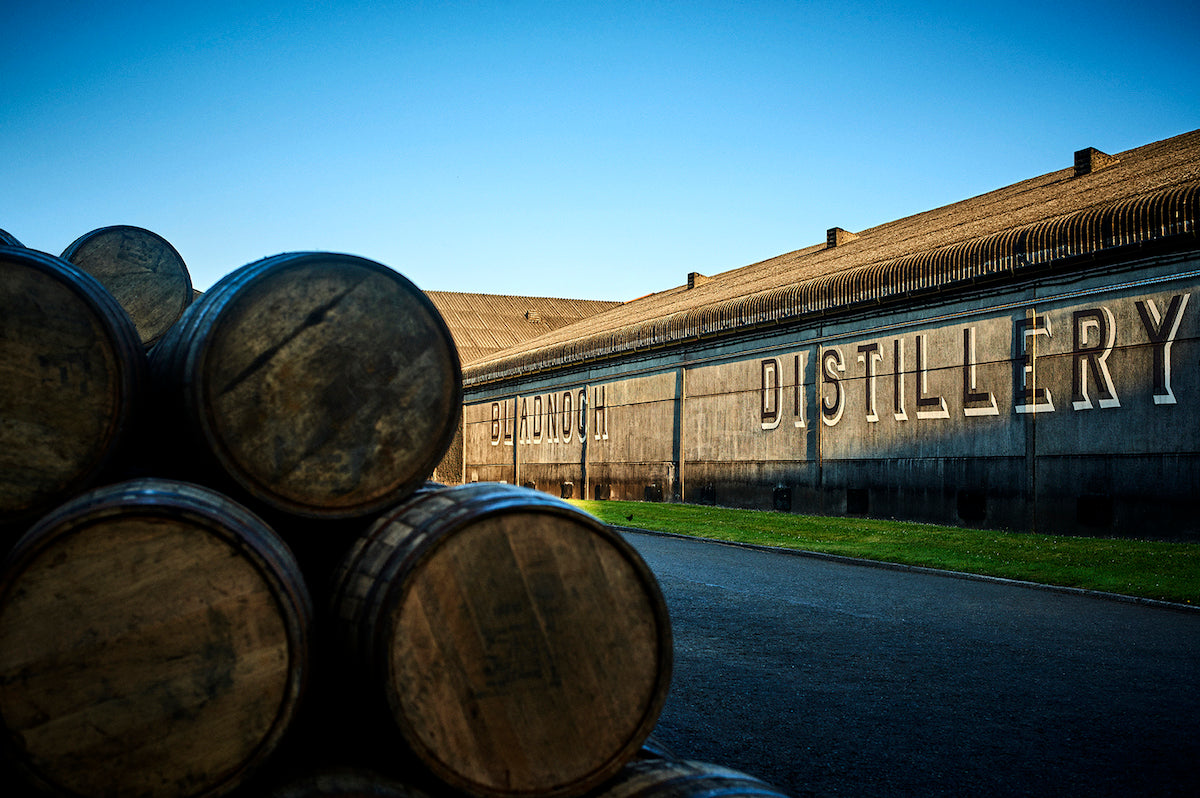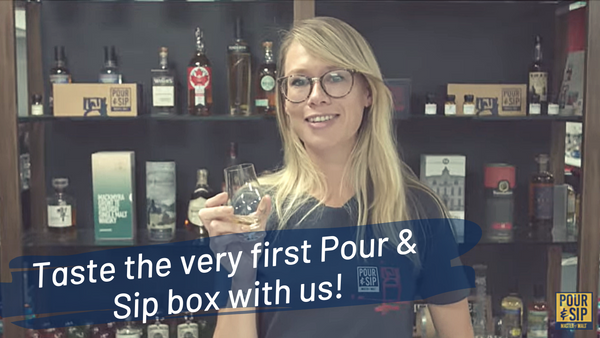A rollercoaster ride through Bladnoch's history

Join us as we shine a light on the Lowland Bladnoch Distillery and its somewhat turbulent history – grab your Vinaya dram (if you have any left after the live tasting!), and take a trip through time with us.
Bladnoch is the southernmost distillery in Scotland, and also one of the oldest, celebrating its 204th anniversary this year. Against all odds throughout its history, the distillery has prevailed – despite being mothballed several times. Bladnoch’s story begins in 1817, when brothers John and Thomas McClelland were granted a license to distil whisky on their farm. It remained in the hands of this family for nearly a century, until it was closed in 1905 due to the deadly duo of over-supply and lack of demand.
The distillery’s future looked brighter once again in 1911 when it was acquired by Dunville & Co, an Irish group, but by 1937 the company was liquidated and the distillery sold again. It reopened in 1956, and Bladnoch was on the up for many years, increasing the number of stills to four in 1966. It changed hands five times between 1956 and 1993, when it was decommissioned by United Distillers. It was during its successful ownership under Arthur Bell & Sons (which would later become part of Guinness / United Distillers (which is now Diageo)) between 1983 and 1993 when Bladnoch got itself a visitor centre, and saw its distribution increased.
As fate would have it, a pair of brothers stepped in at this point. Just one year later, Raymond Armstrong and his brother Colin bought the distillery from Diageo, under the clause that they wouldn’t restart production – it was, initially, to be enjoyed as a holiday home. But they were so taken with Bladnoch’s history that over the course of six years, after much petitioning from the brothers and the locals, they managed to persuade Diageo to allow them to make just 100,000 litres a year. That’s way below its capacity, as at its peak the distillery was producing 230,000 litres. This worked out very well for everyone until 2014, when the four shareholders were split: two wanted to sell, two didn’t, and they couldn’t find anybody who wanted to acquire a 50% shareholding. So Bladnoch once again went into administration, despite no financial difficulties.
So far, despite some successes, it’s been pretty rocky for Bladnoch. But, as we know, that wasn’t the end for the distillery. In June 2017 production was started once more by Australian businessman David Prior – rather poetically, exactly 200 years after its story began. With the help of master distiller Ian MacMillan (who knows a thing or two about reviving distilleries, doing the same with Deanston and Tobermory), the distillery was rebuilt. When MacMillan left, ex-Macallan master distiller Dr Nick Savage joined the team in 2019 – you can catch him on our first live tasting of the month.
It wasn’t just ownership that changed over the years. While geography can only tell us so much about a whisky’s flavour, Lowland whiskies are generally known for their floral, delicate flavour profiles – interestingly, the flavour of Bladnoch’s new make has varied quite a bit. Before the distillery was mothballed, it boasted all of those hallmark light, floral notes, though then it became nutty and spicier as it was used more in blends. When production recommenced in 2000, MacMillan ensured the flavour reverted back to its pre-mothballed gentleness – though slightly fruitier.
So that’s the rollercoaster ride of Bladnoch’s history – now you can see why the current team dedicated this month’s Vinaya whisky to the original founders! What did you think of it? We know it went down deliciously well in the live tasting – so make sure to let us know over on our social channels.
Jess 🥃



